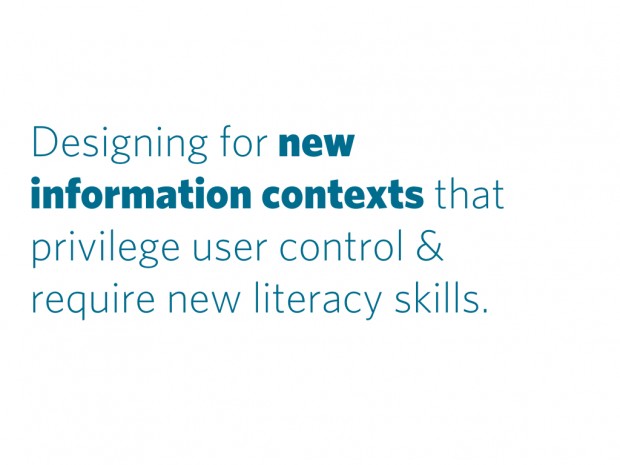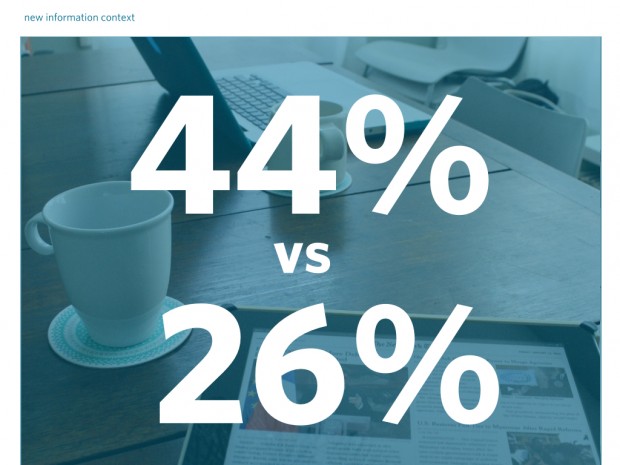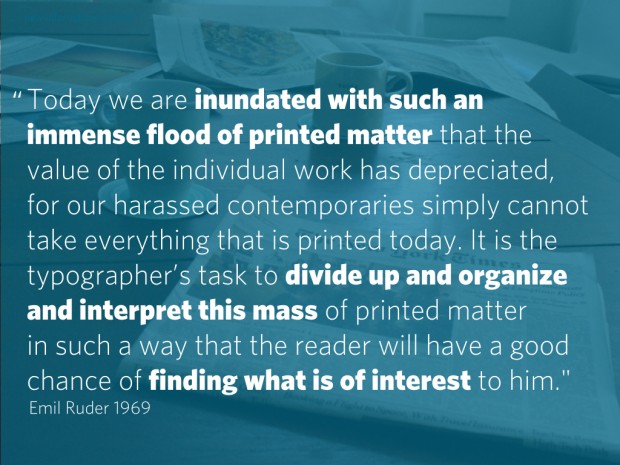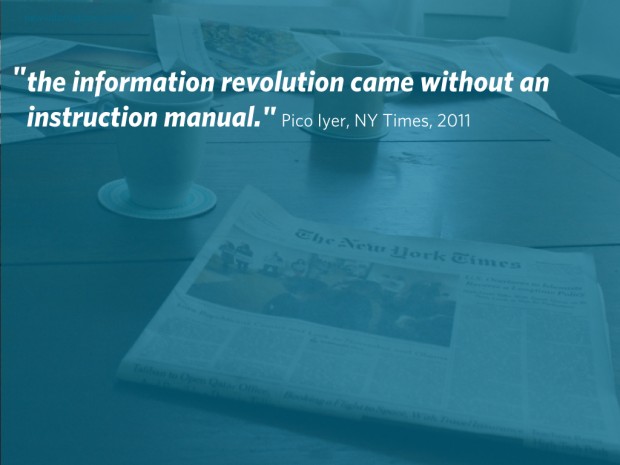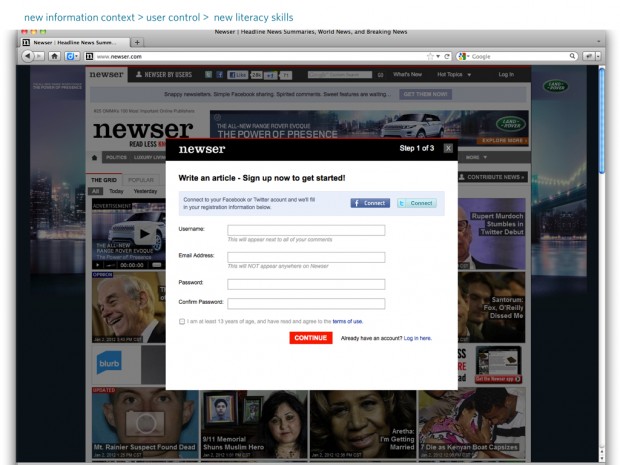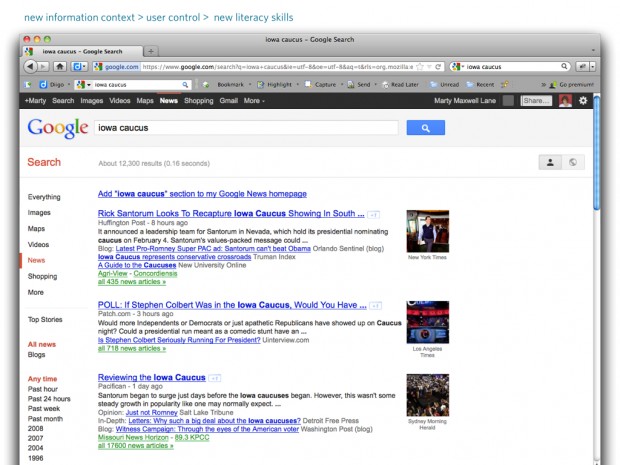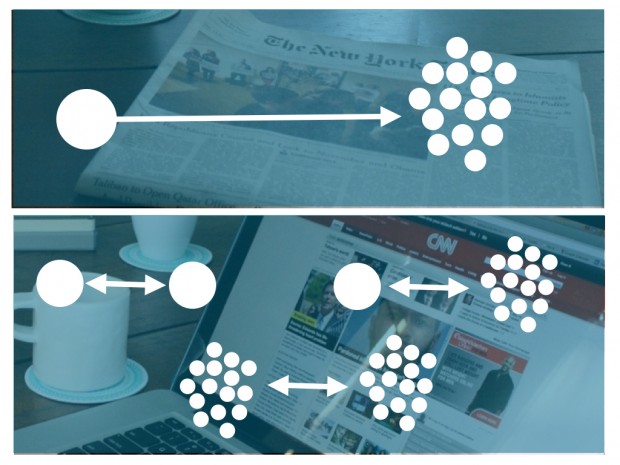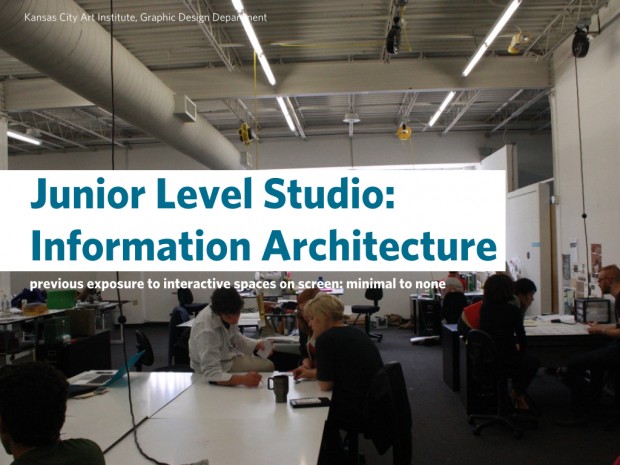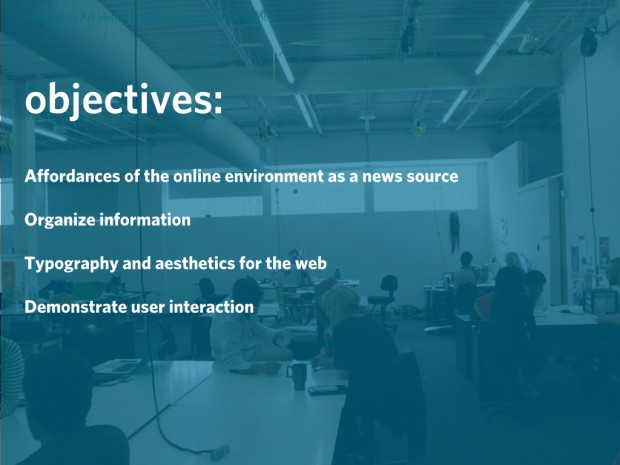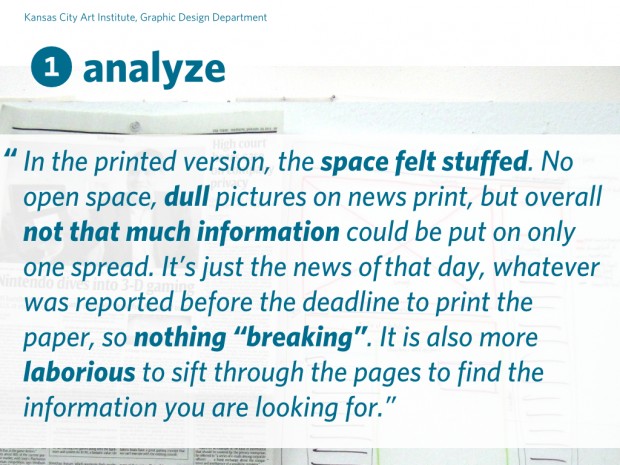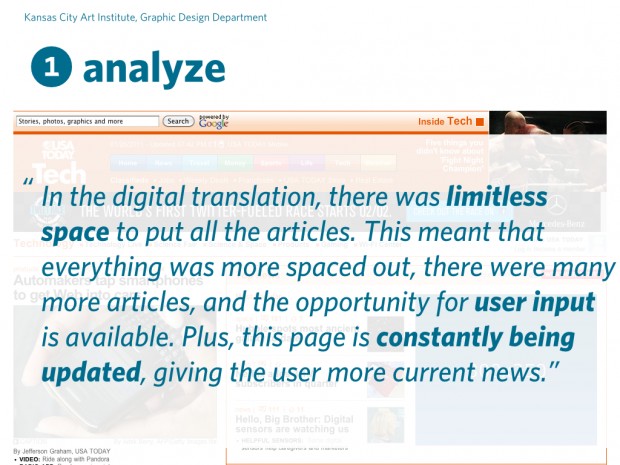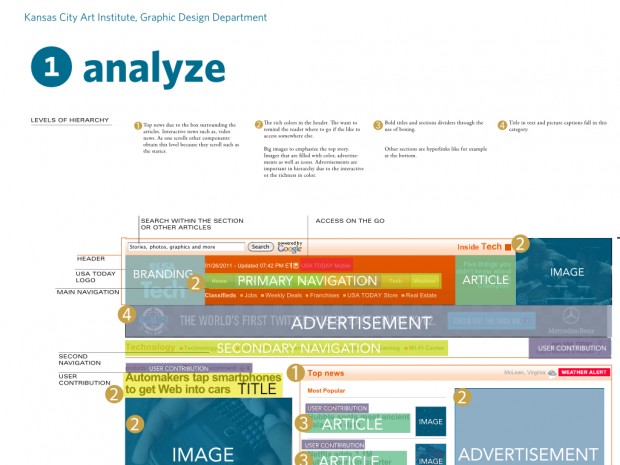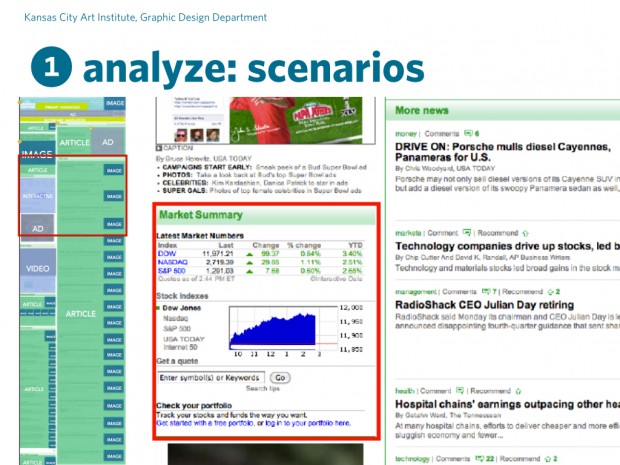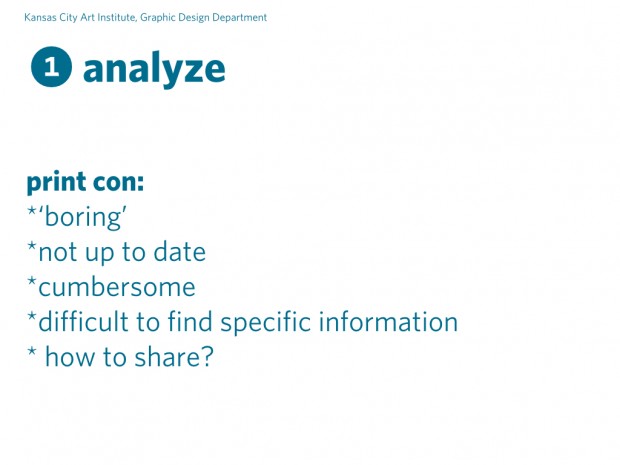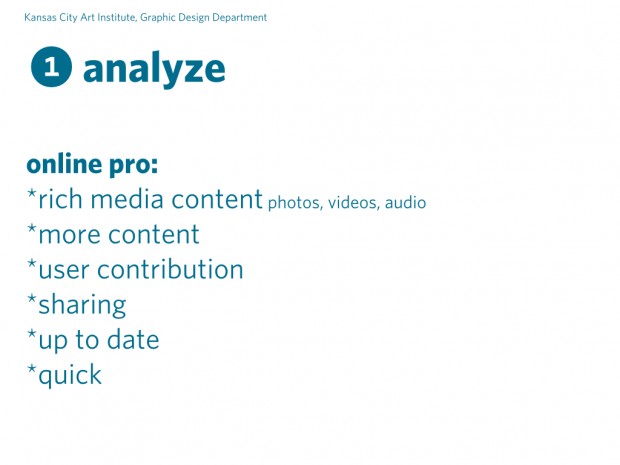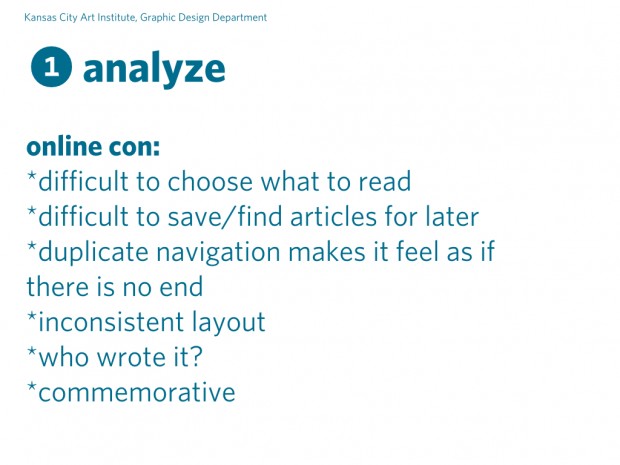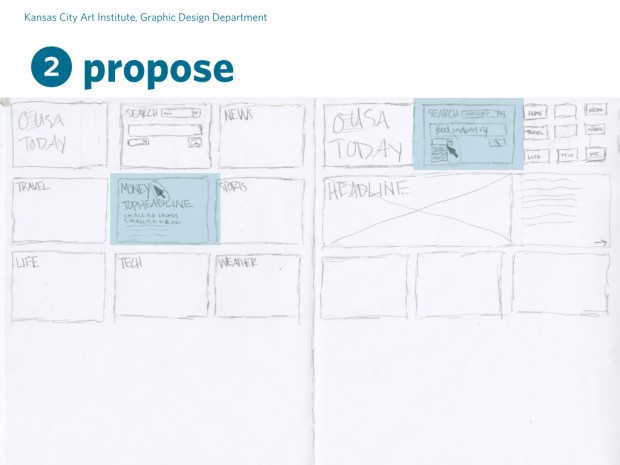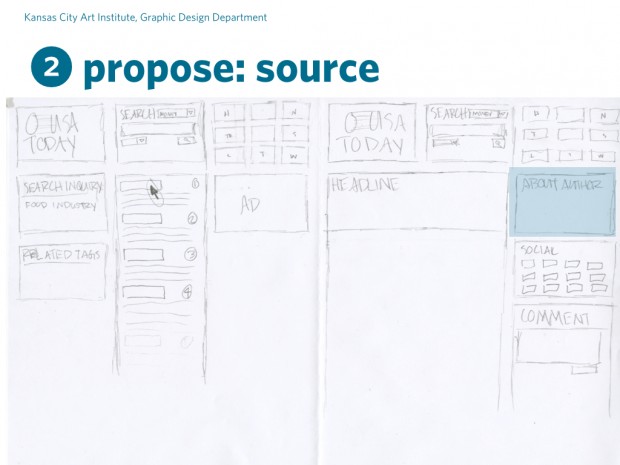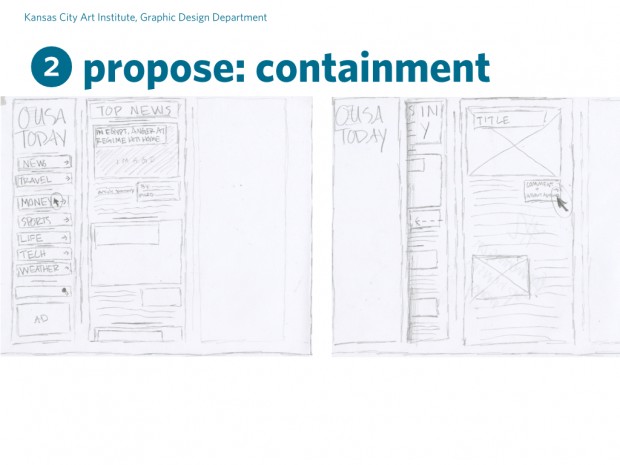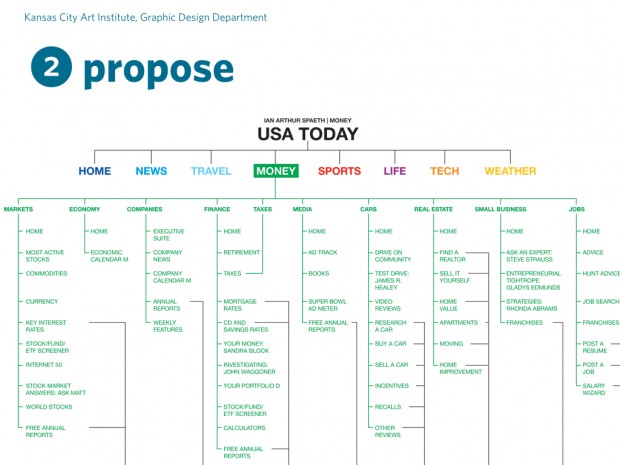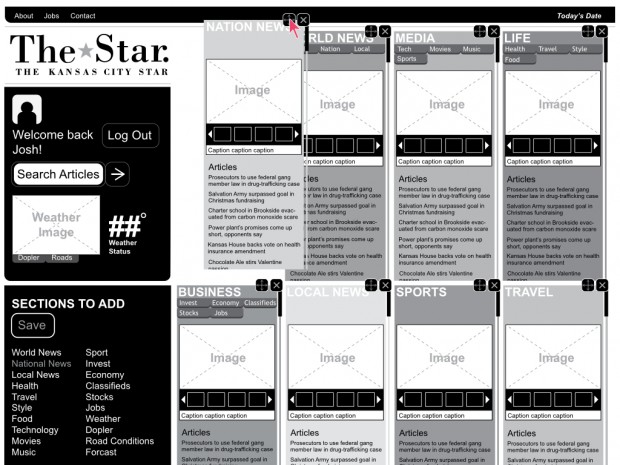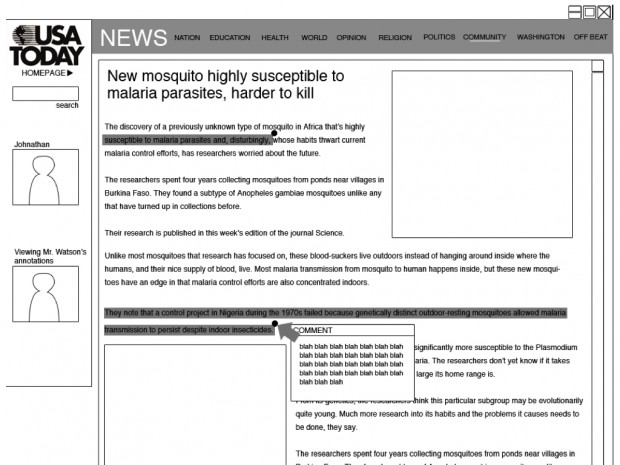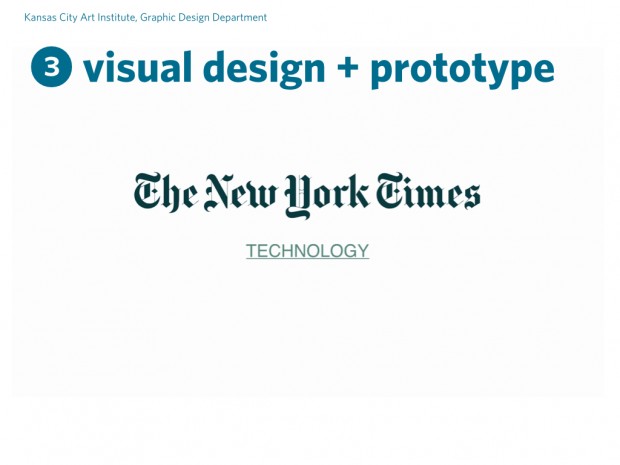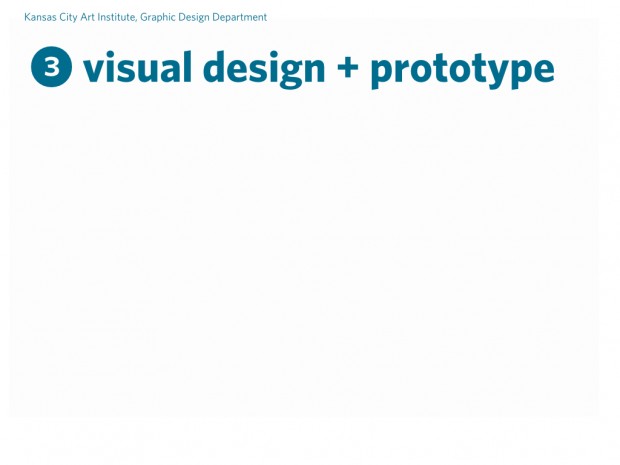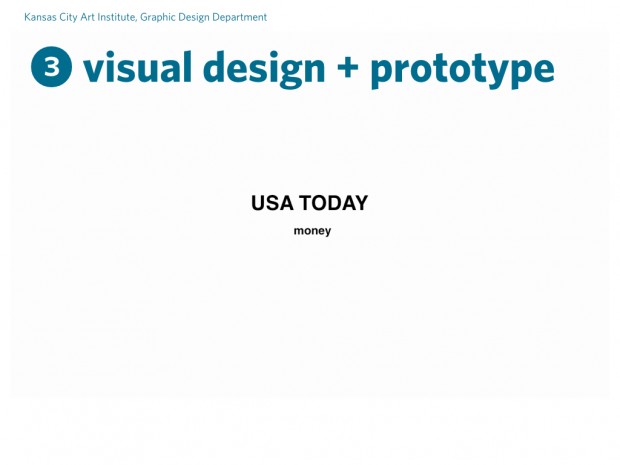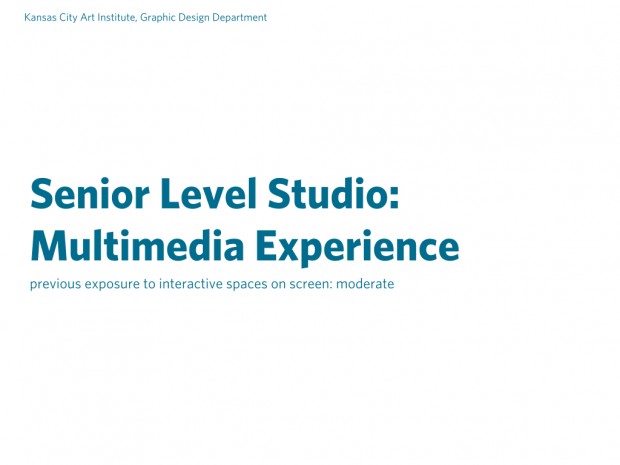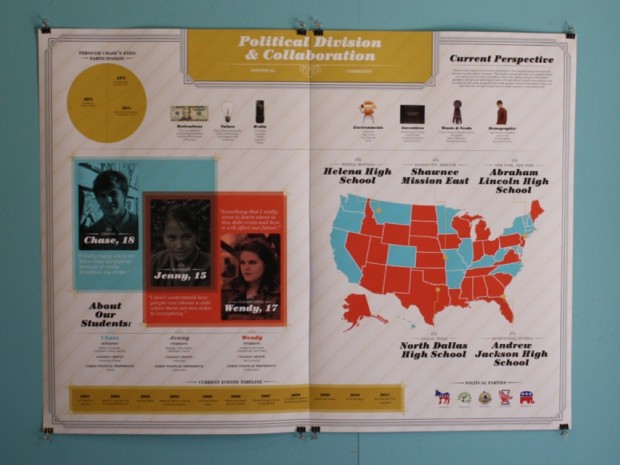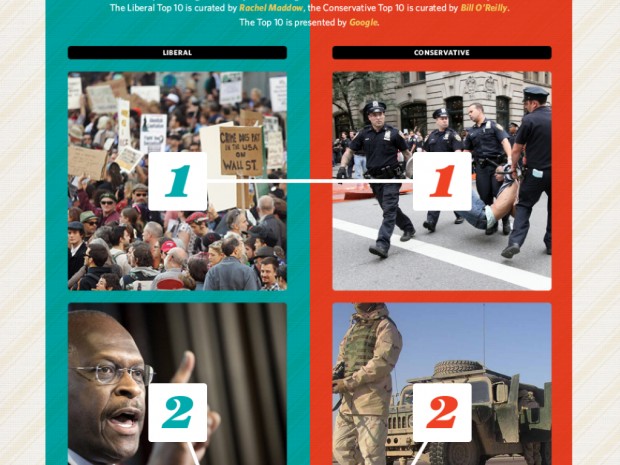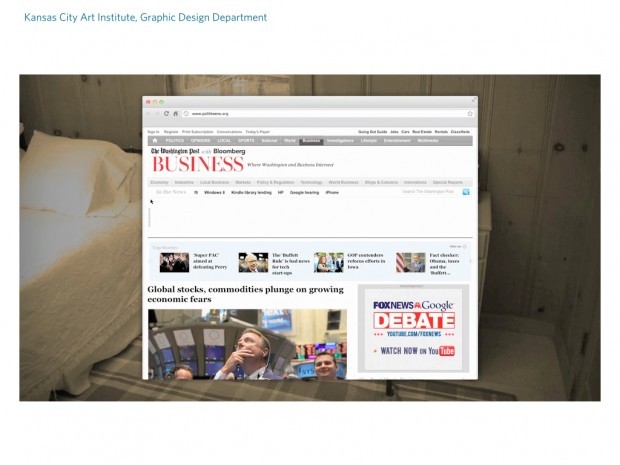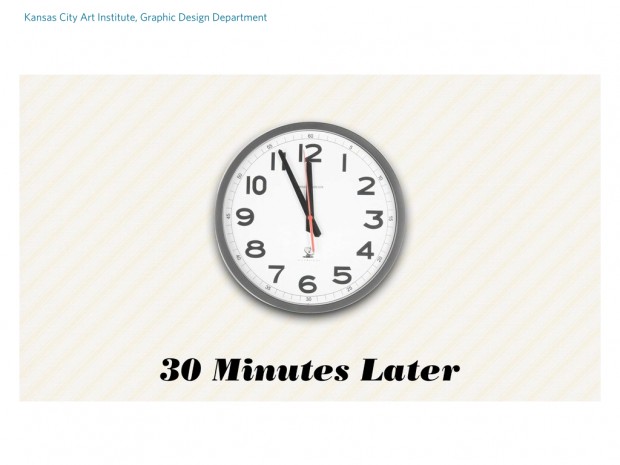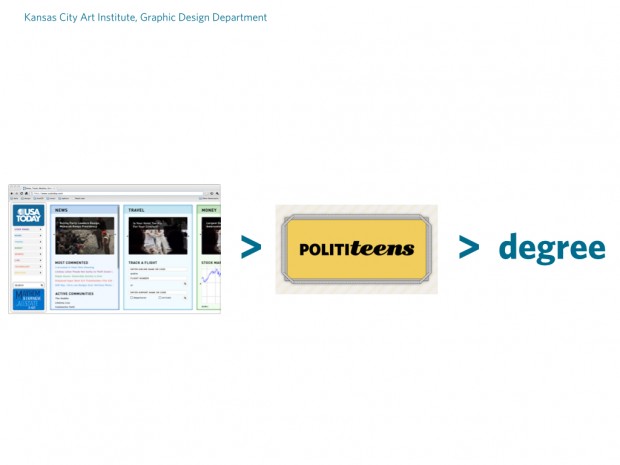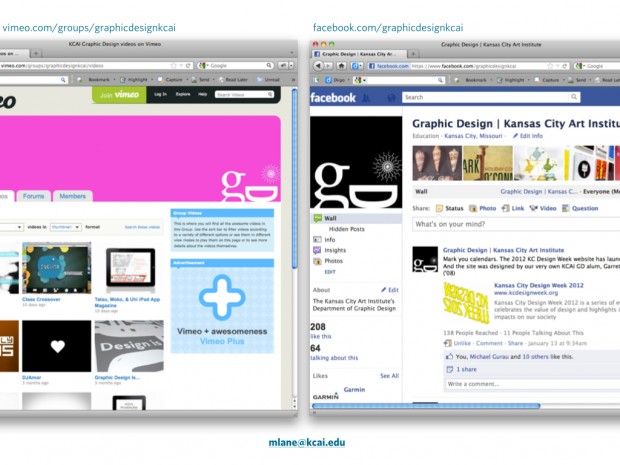Designing for New Information Contexts that Privilege User Control and Require New Literacy Skills.
Design Principles and Practices, 6th Annual Conference, Los Angeles, CA. Jan 2012. Presenter of case studies.
Abstract
Morning coffee, kitchen table, sections of newspaper thrown about; twenty years ago this was a common scene in American kitchens, but fast forward to today and it might be hard to find a printed newspaper as a part of our morning experience. Last September, The Pew Research Center reported that 44% of Americans are getting their news from online or digital sources, as compared to 26% who get their news from traditional print sources. Our shift to engaging with news in an online context — that requires trust and empowerment — demands a new set of digital and visual literacy skills for both designers and audiences.
The challenge is two-fold. For designers the challenge is how to create the conditions for quality online engagement; and for audiences the challenge is in understanding how to operate in these new spaces. With traditional print, the communication channel is one way; we consume the information from our trusted sources. With online contexts, the communication is often two ways — one-to-one, or one-to-many — through commenting, customization, user generated tags and even user-generated content. With such high levels of contribution, how do users know what is credible, quality information? Online spaces are highly tailorable to specific audience needs, which creates a customized experience, but may limit the news to one perspective. How do we create environments that provide a holistic perspective, while not overwhelming audiences with too much information?
In a junior level Information Architecture course in the Kansas City Art Institute’s Graphic Design department, I set out to build a project that would ask students to address these questions. Students were asked to take an existing news source that used both print and online channels and redesign it with the audience, and digital literacy skills, in mind. They began by collaboratively analyzing the user experience of both the print and online spaces. Then, working individually, they speculated ways to improve the online experience, pulling inspiration from both the online and print channels. Finally, the students presented prototypes of their proposed online news environment.
The defined project objectives were as follows: > Account for affordances of the online environment as a news source > Organize information for a time-based environment, considering sequencing and users > Manage clear navigation structures > Demonstrate user interaction in a fluid presentation
These objectives were created in order for students to assess the user experience in these new contexts. Many of the students are digital natives and maybe unaware of the challenges this new space brings for older audiences who are more accustomed to print. However, these students will be expected to design for audiences other than themselves, thus understanding digital literacy challenges is critical. Moreover, many students benefitted from this process by applying the digital literacy awareness to their own engagement with online news.
While this project was carried out in a graphic design studio at the university level, I see these challenges as transferable to many academic environments. In this presentation, I would like to showcase the student process, including analysis from current news channels, as well as the resulting artifacts. My hope is that by sharing this project, others may find ways to integrate these new digital literacies into their classrooms.
